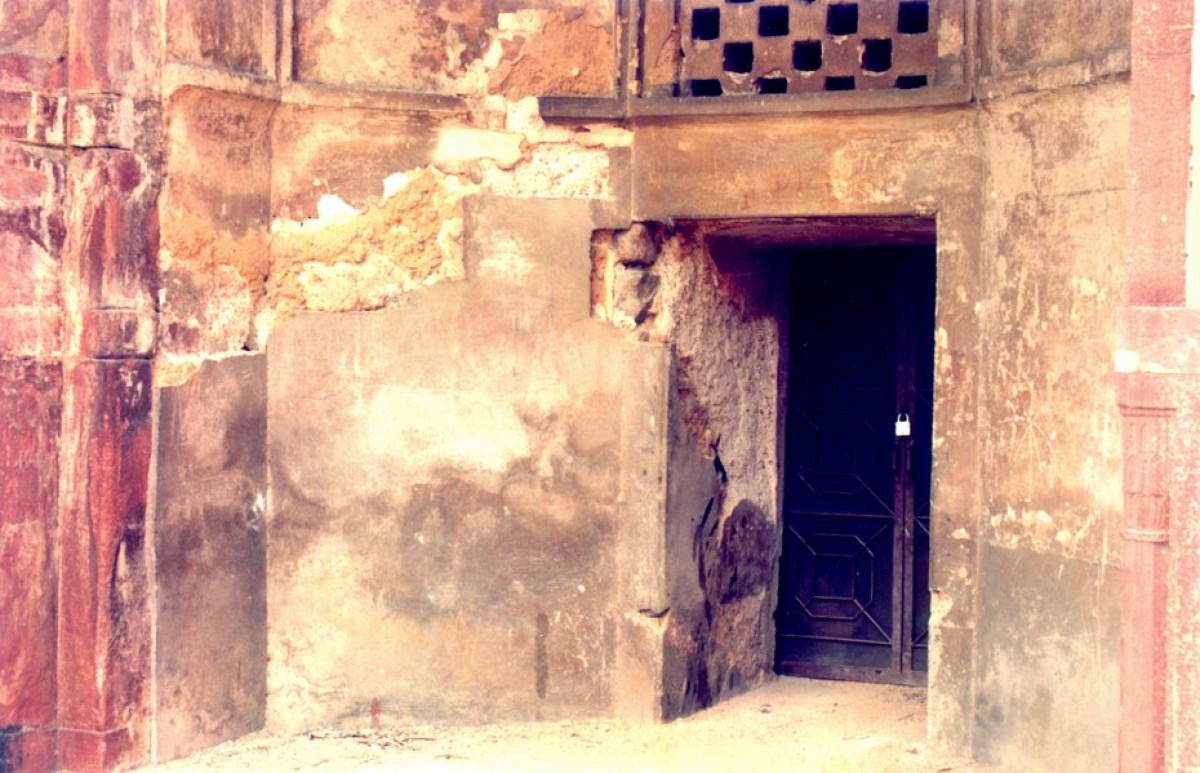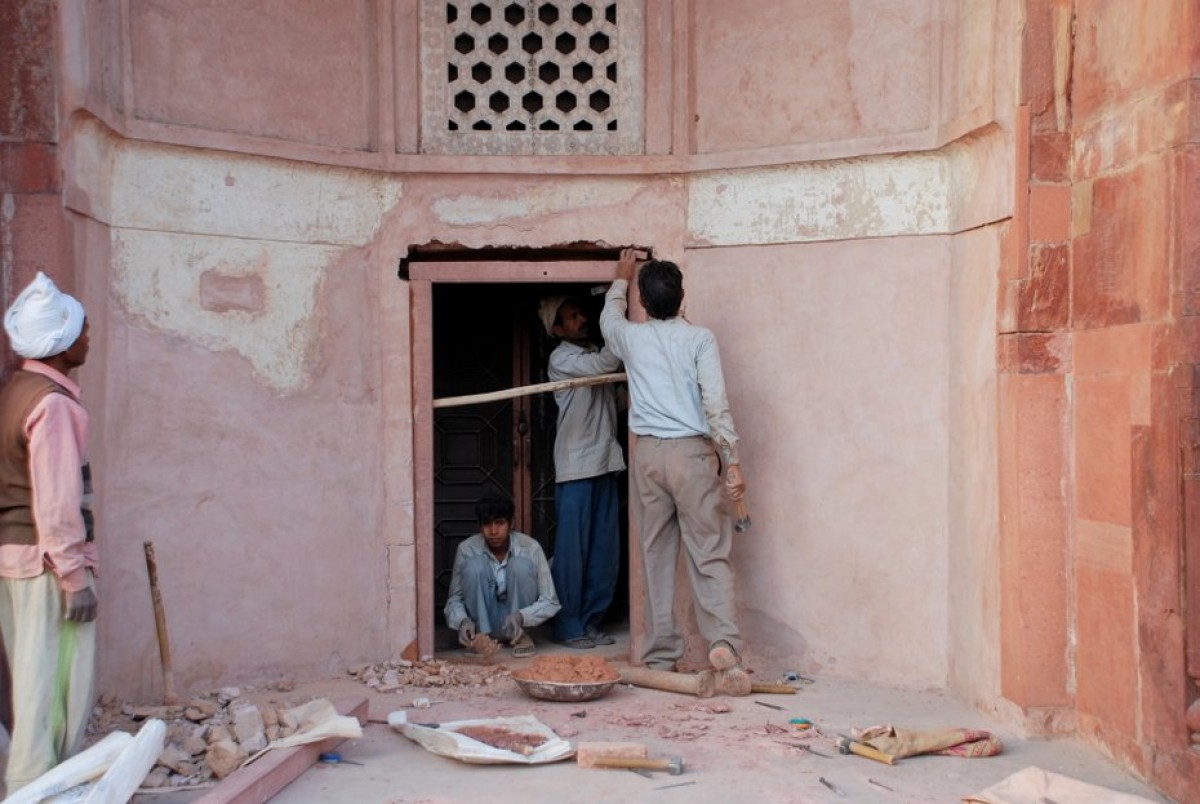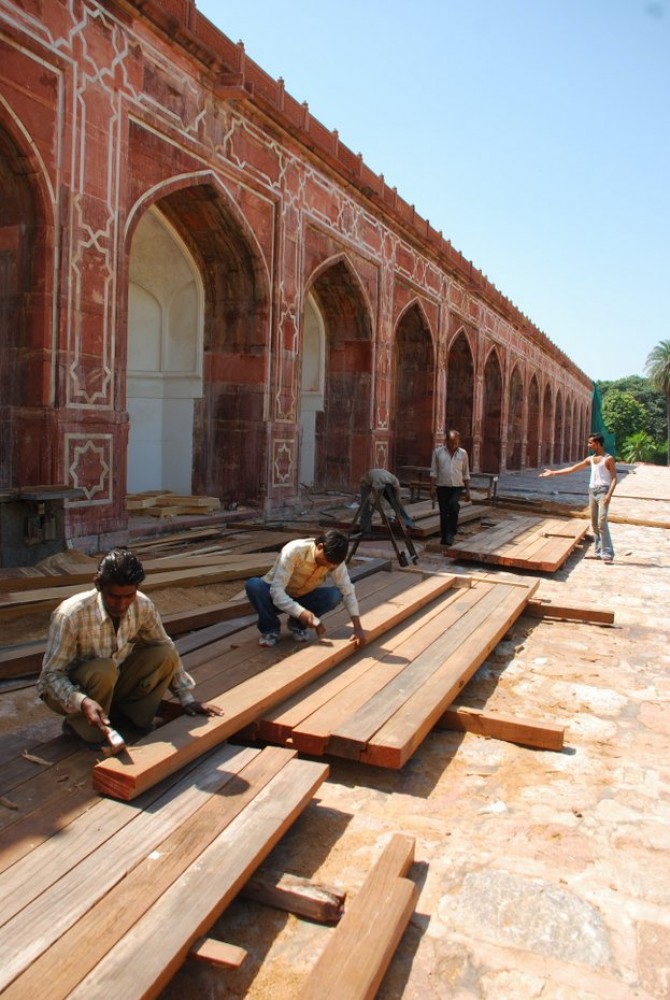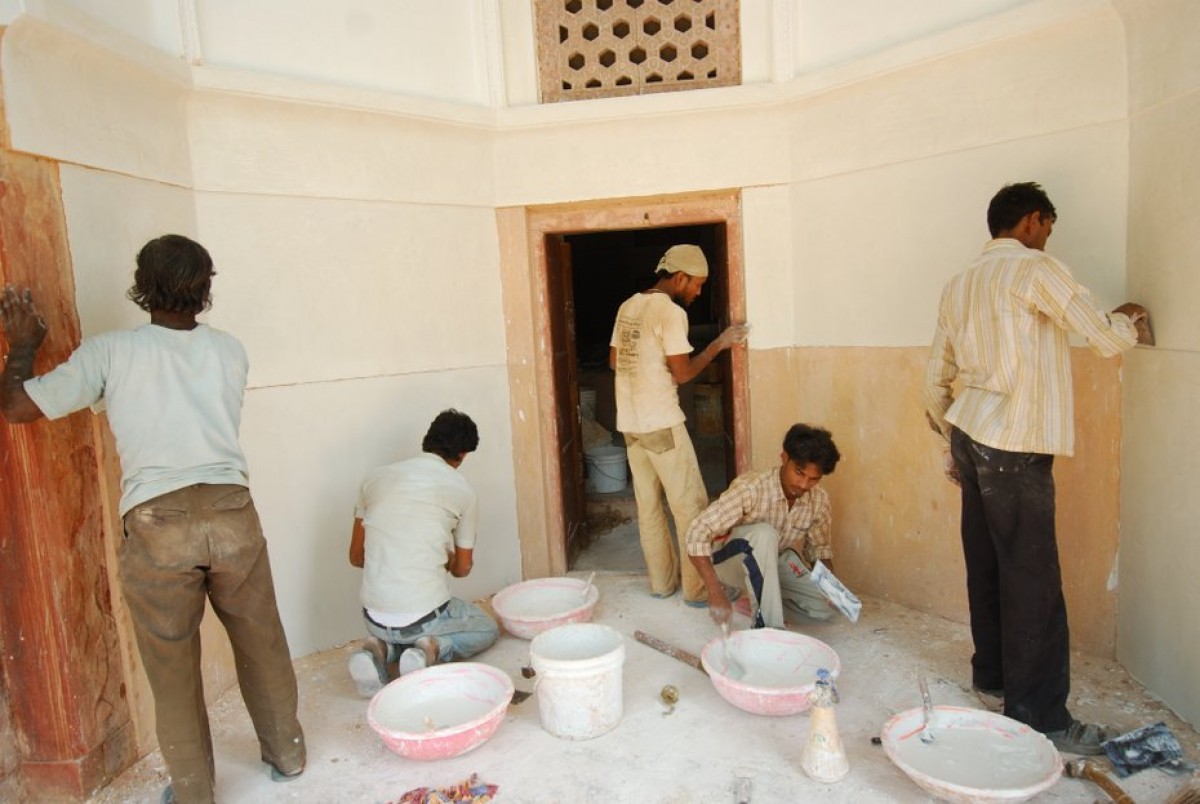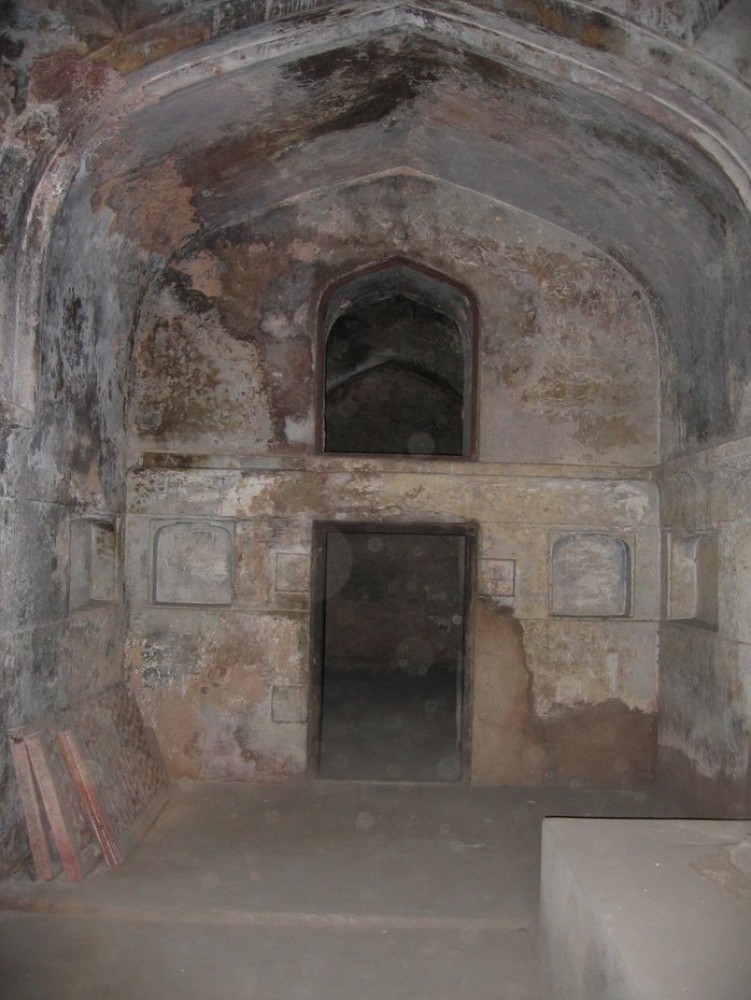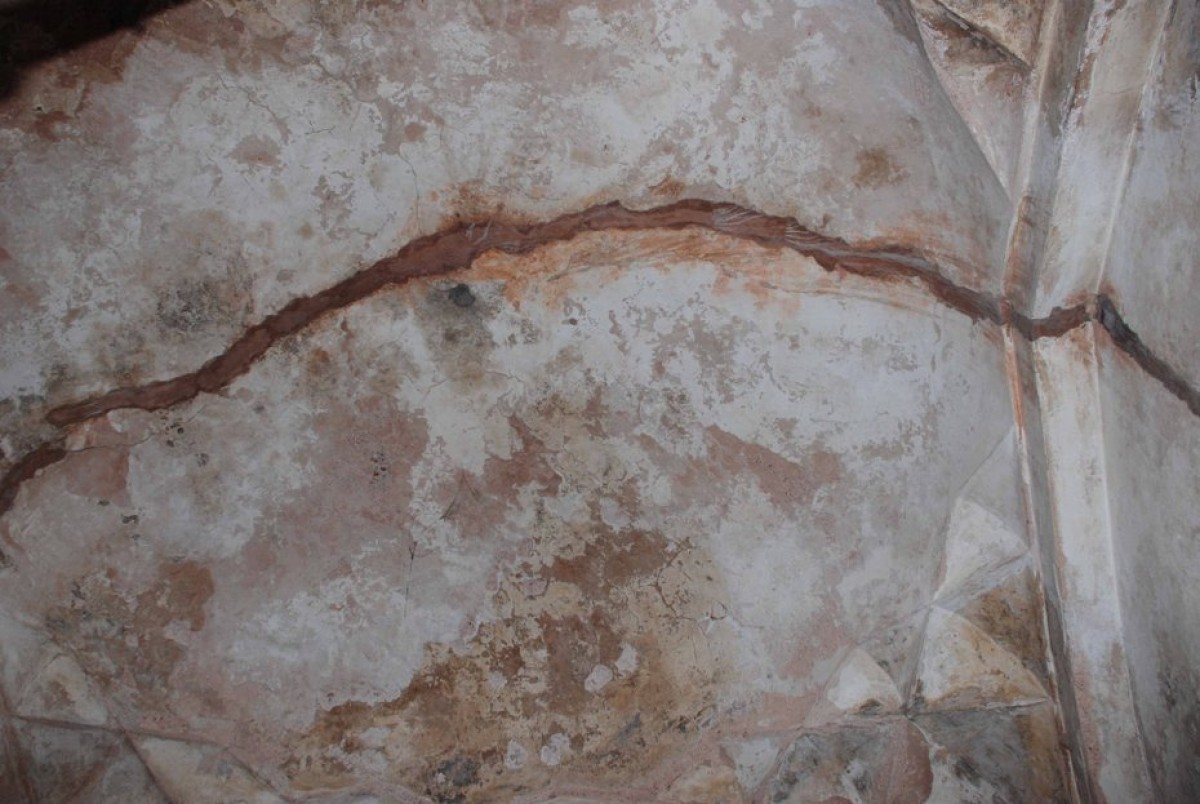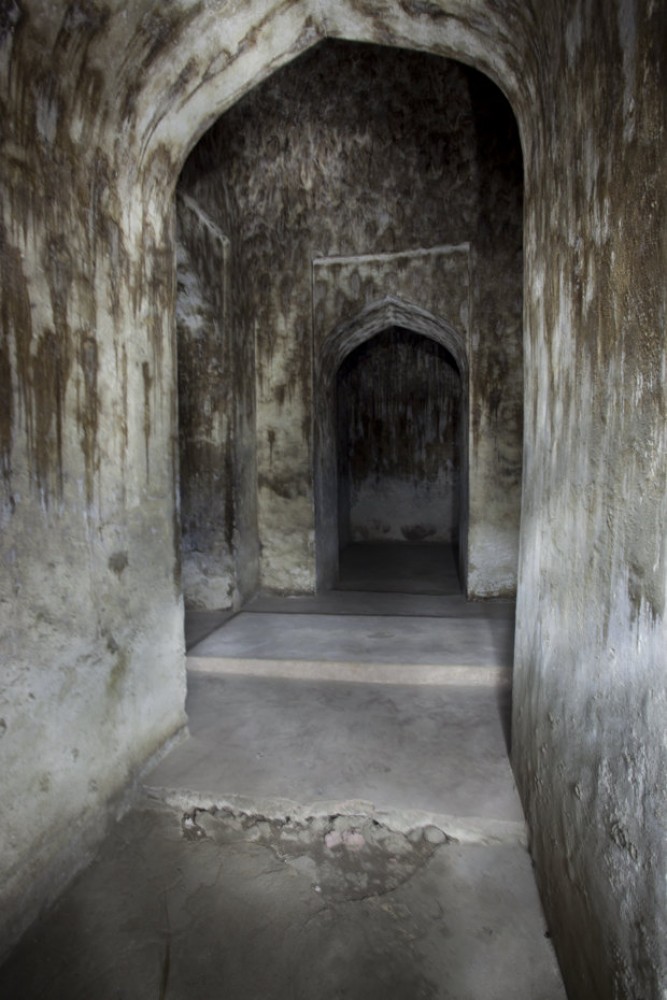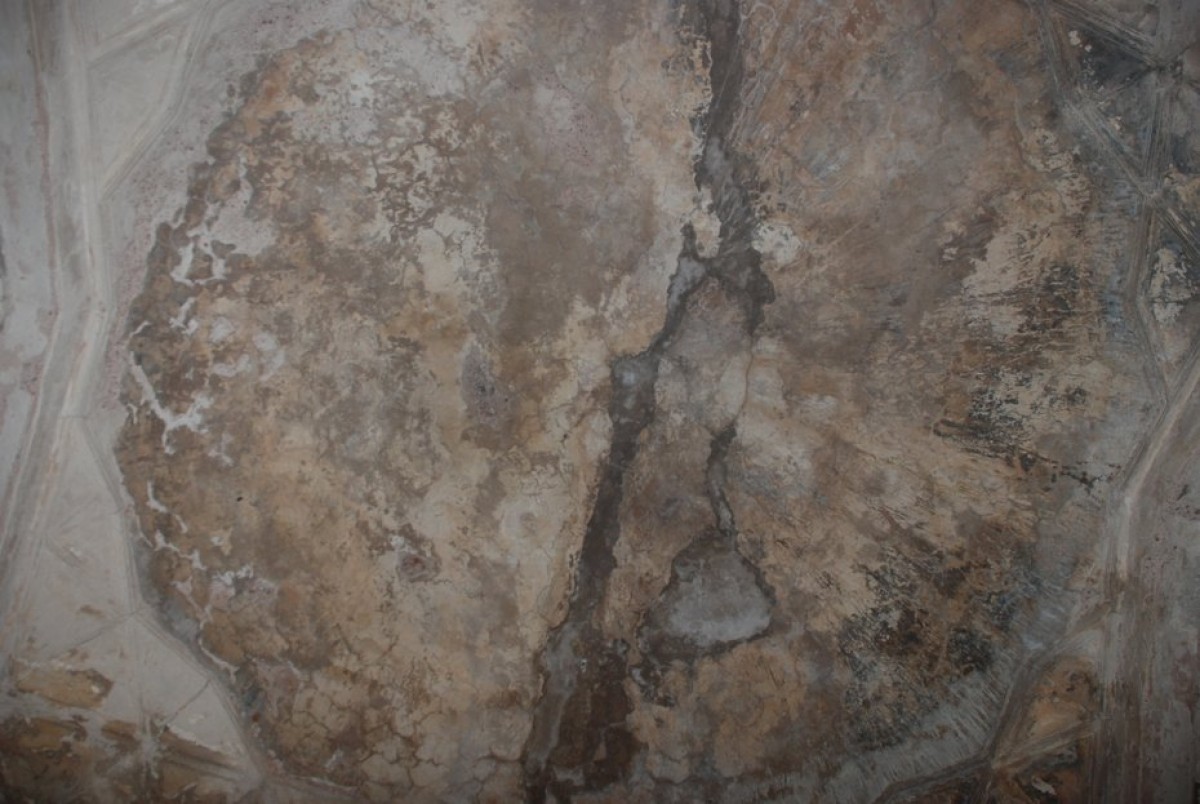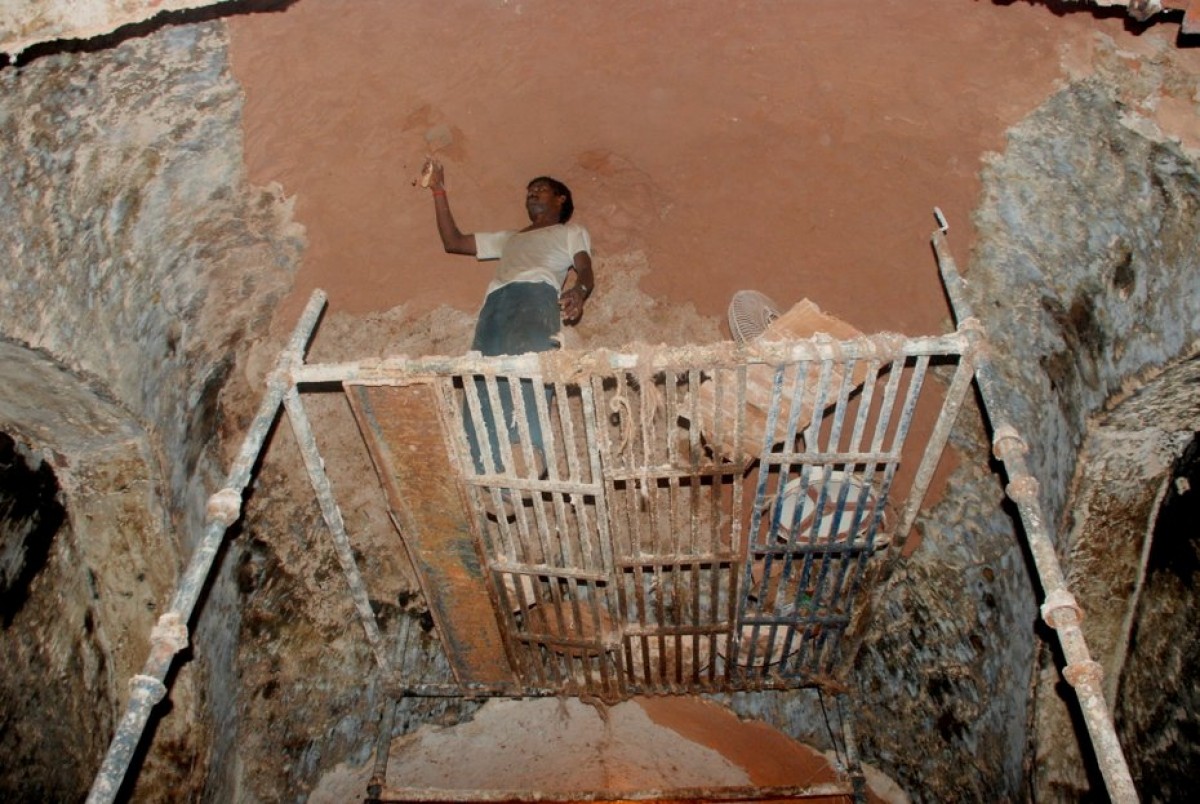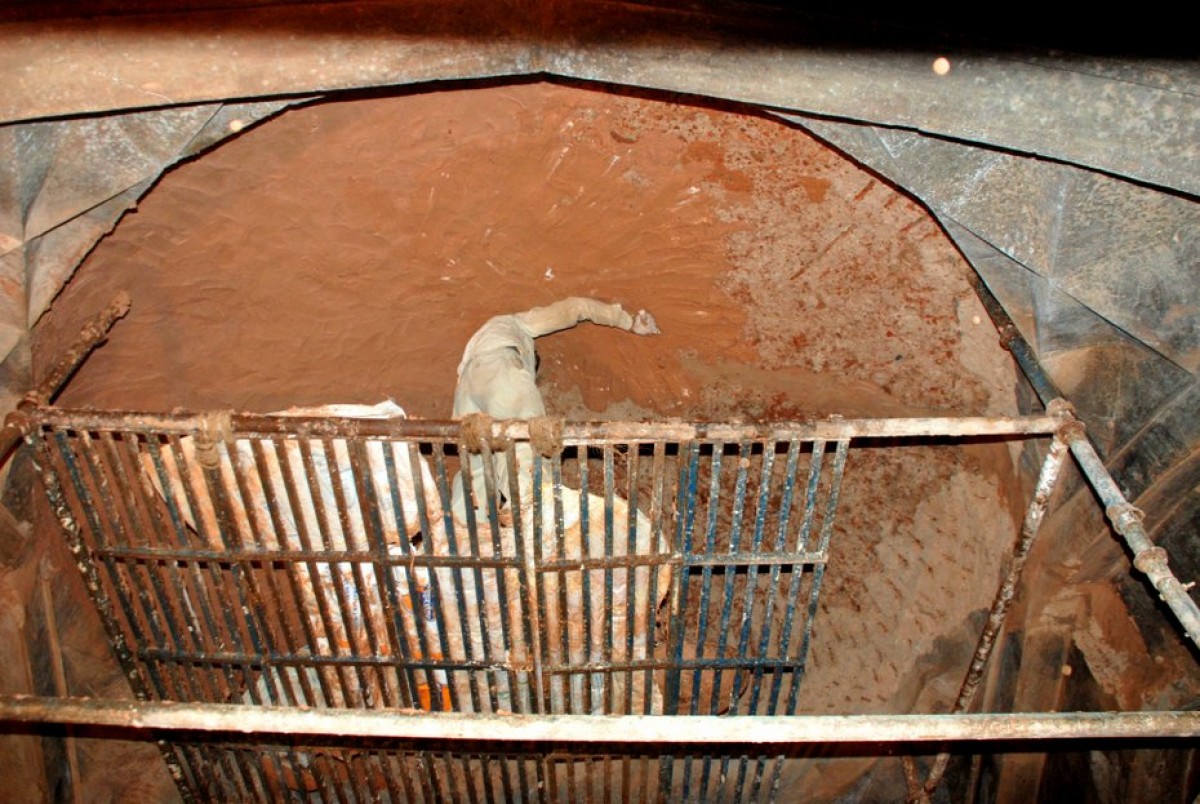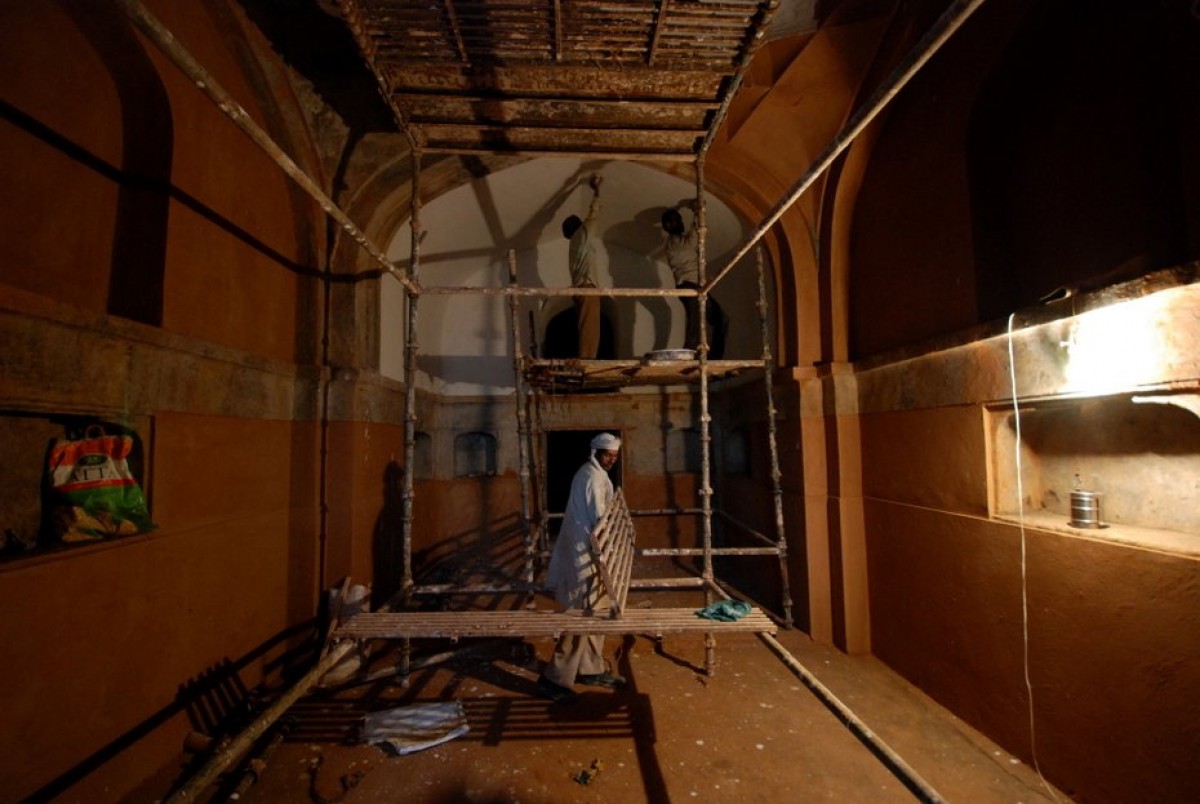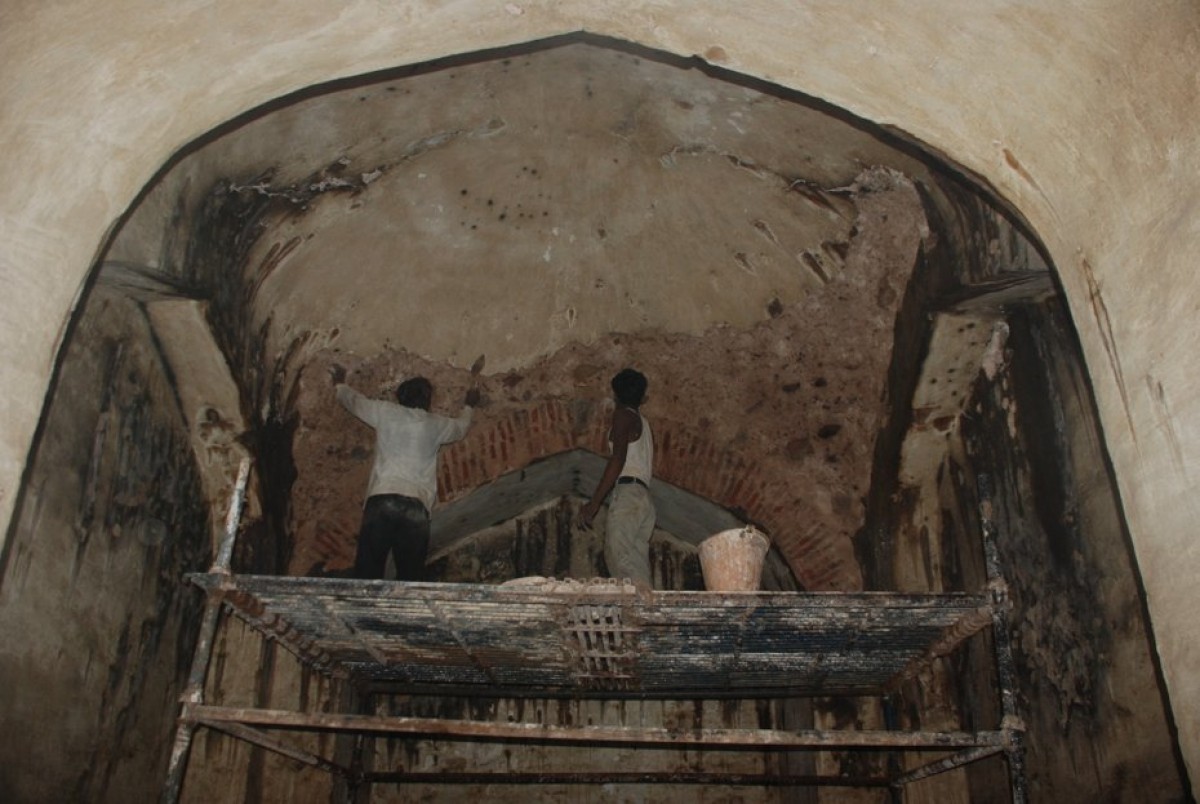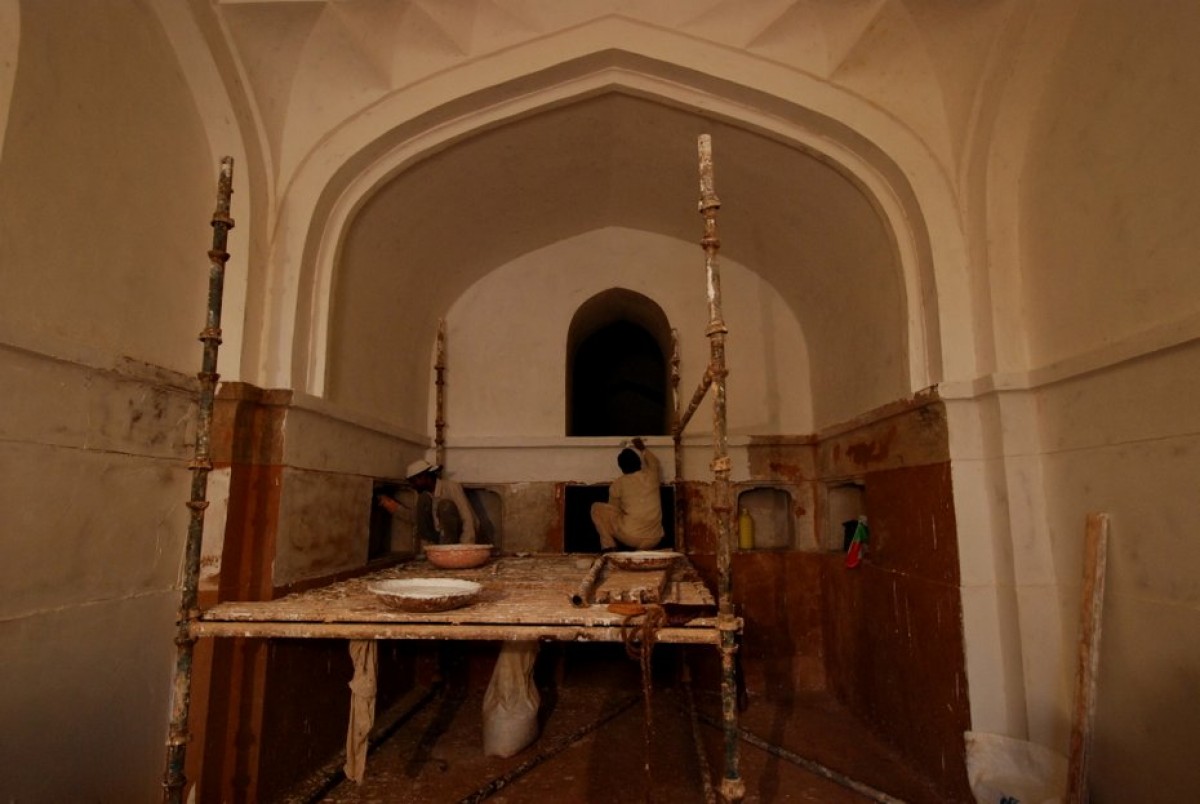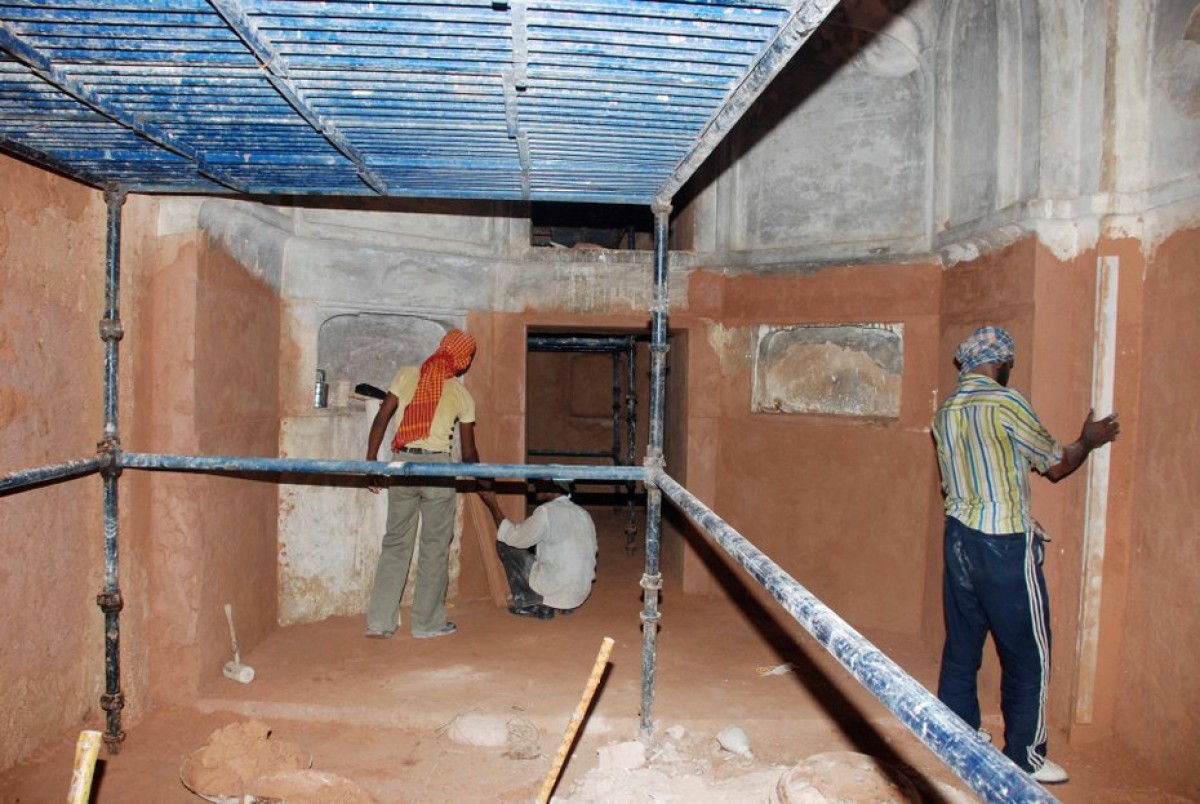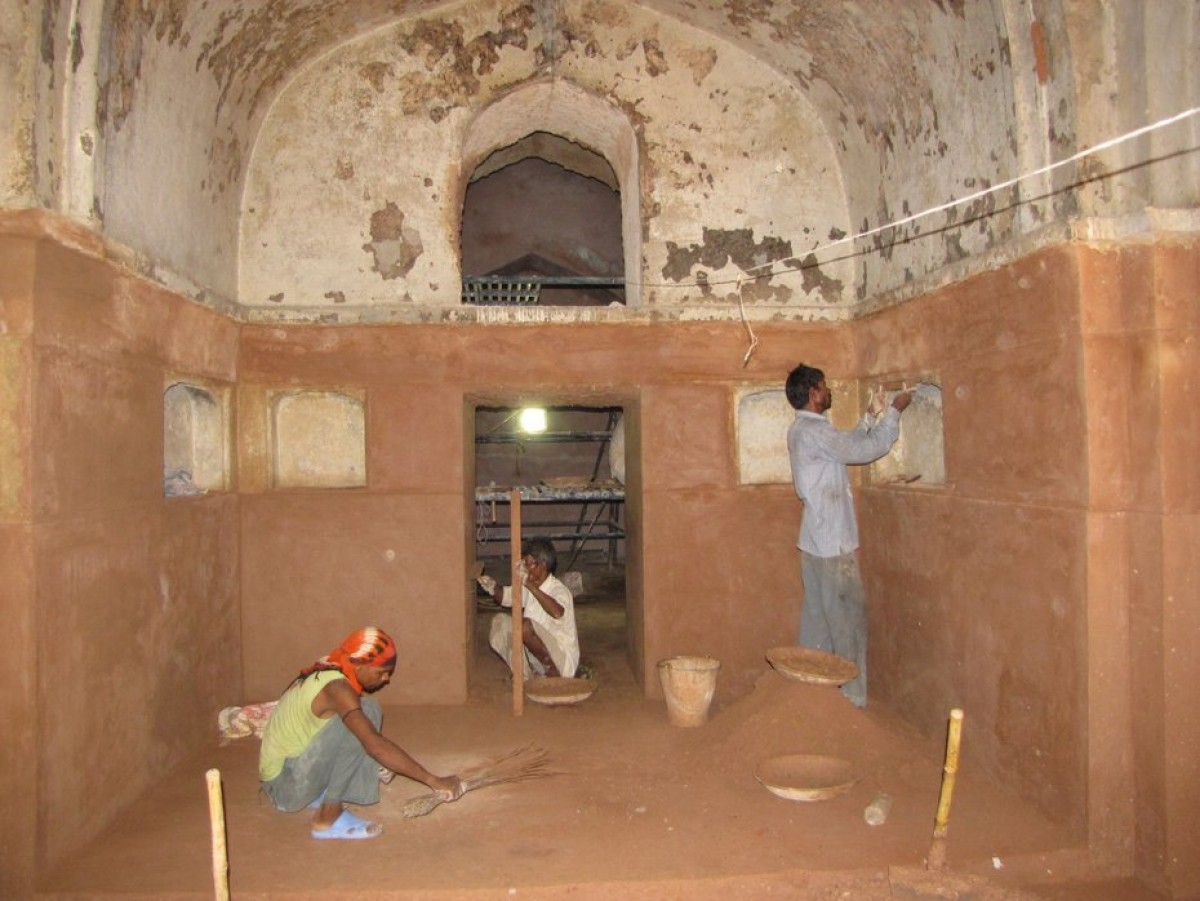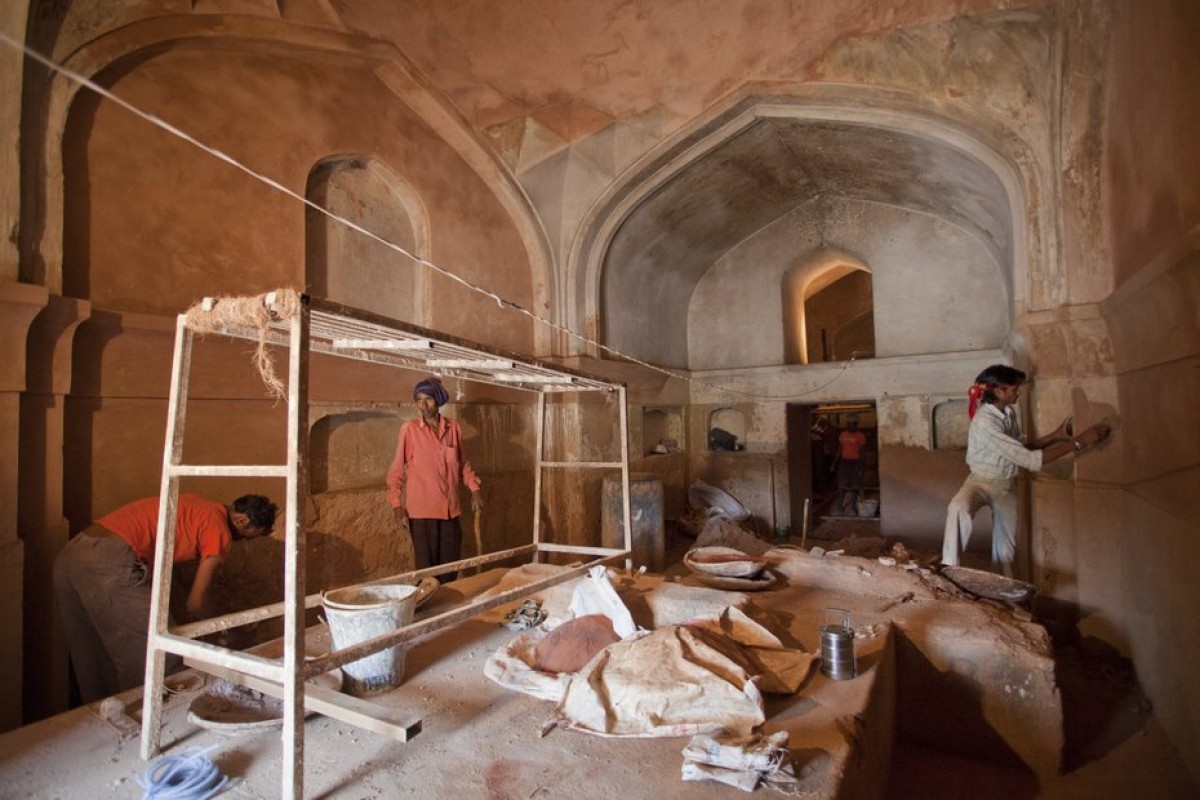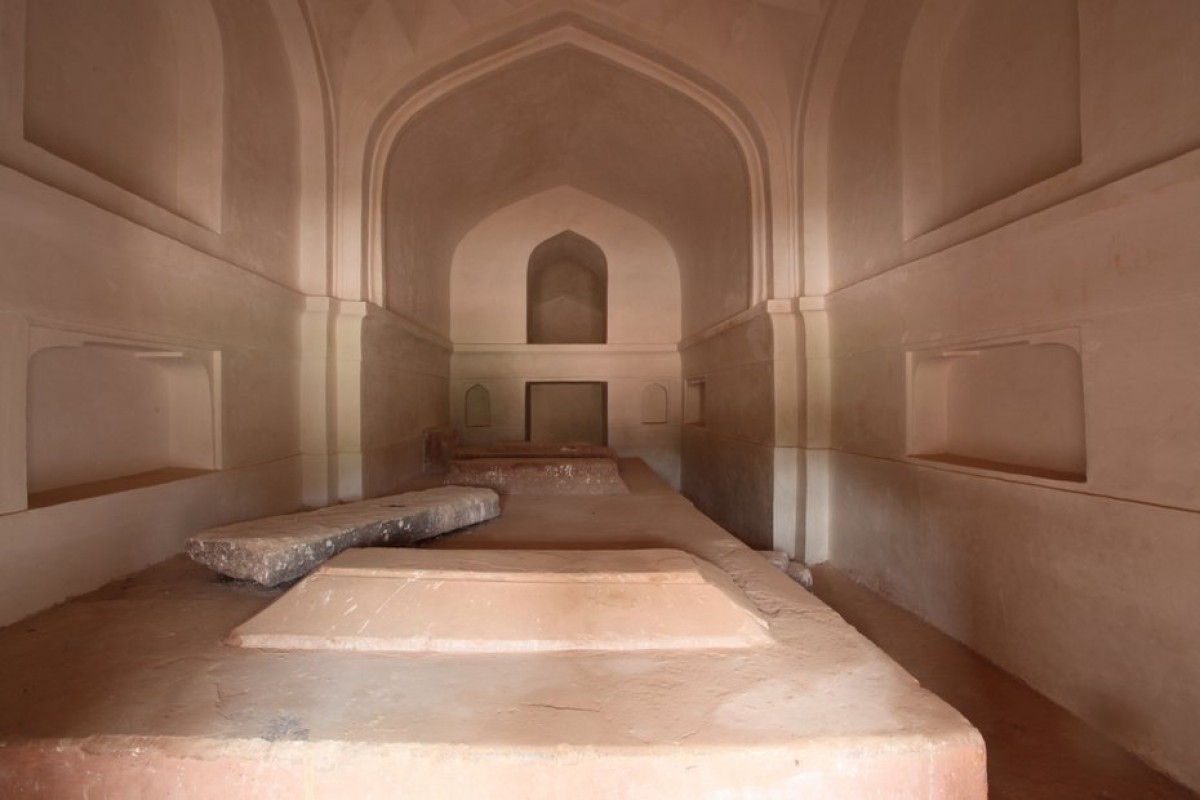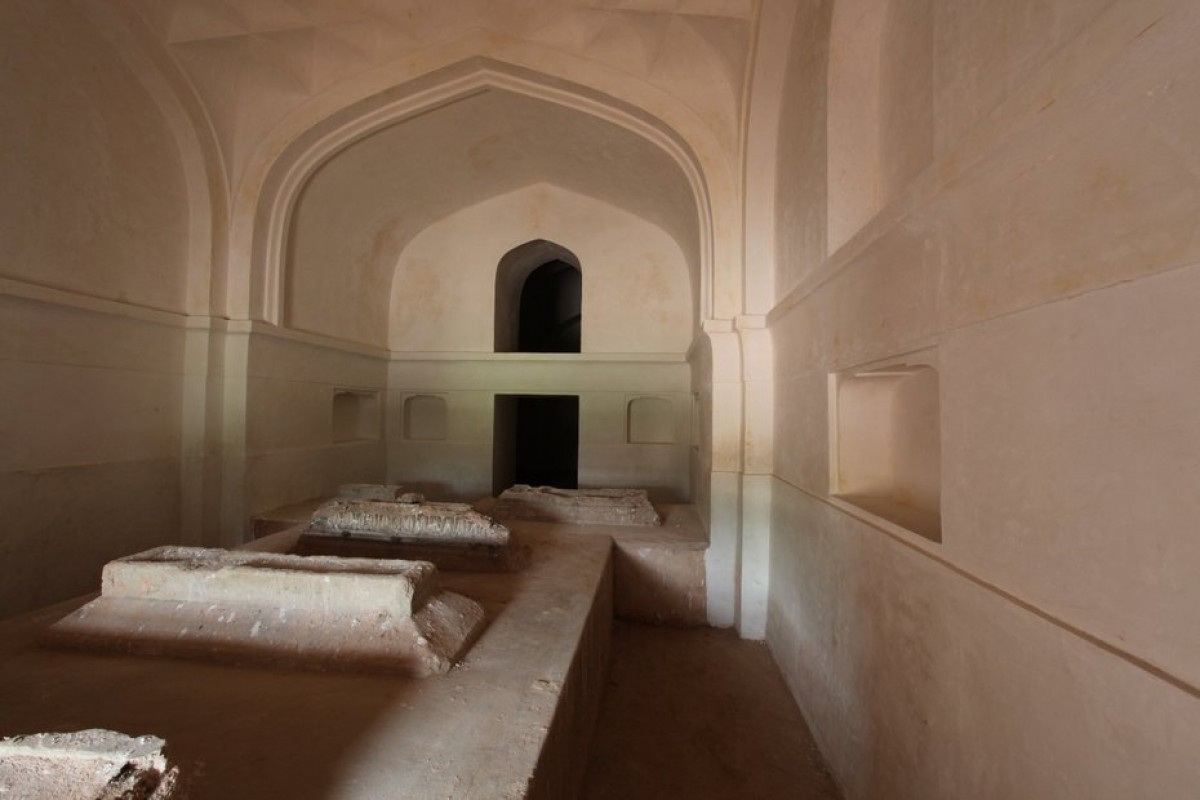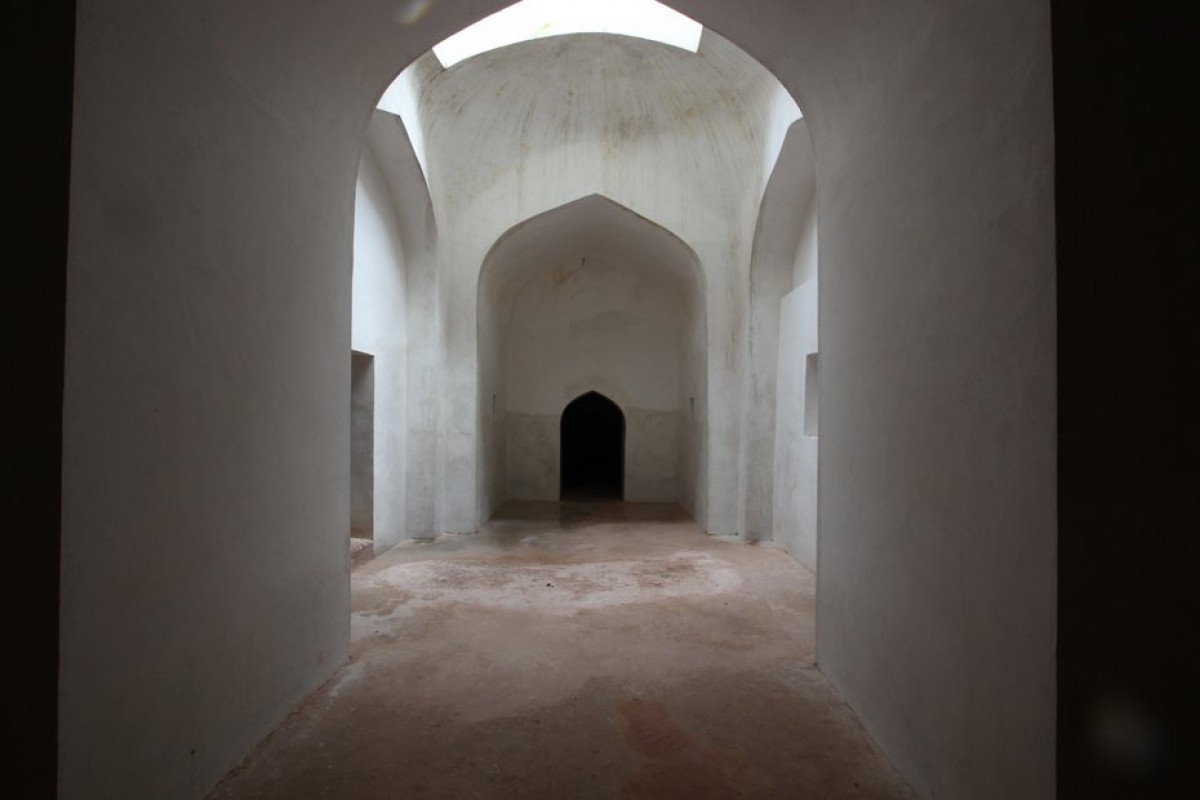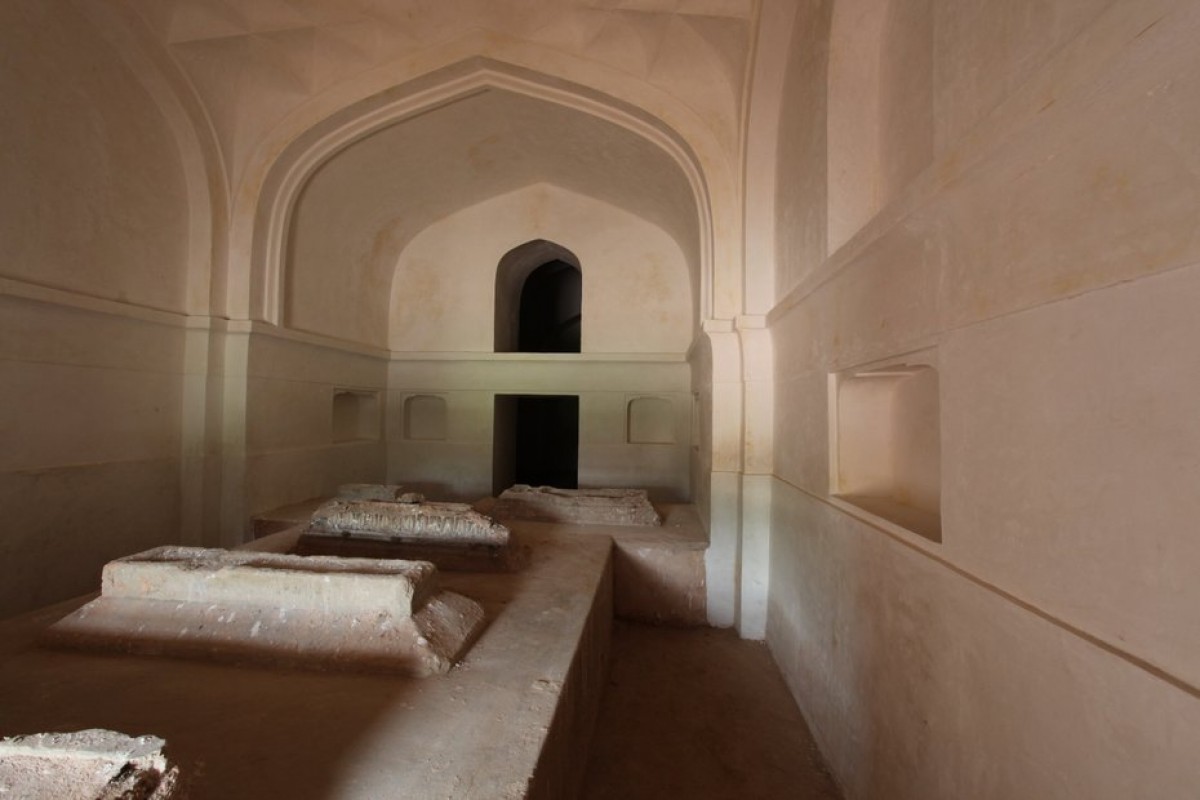
The conservation works ensured for a long term preservation, arrest decay and carry out much needed conservation works on the 68 lower chambers containing Mughal graves.
Humayun’s Tomb has often been referred to as the “Dormitory of the Mughals”, as no other mausoleum contains so many dead of the Mughal dynasty as the Humayun’s Tomb. Each of the four sides of the mausoleum has a series of cells, where 160 Mughal family members have been buried. The wall surfaces required a significant amount of re-plastering work, which included removing cement mortar and using lime mortar. The unsightly iron doors were removed and the red sandstone door frames and wooden doors were re-installed; the original doors were used as firewood in the aftermath of partition when the complex was used as a refugee camp.
Several façade stones at both the lower and upper plinth were in a decayed state due to salt action and iron clamps. Stains indicating water ingress were visible across the facade of the arcade and almost all the original lime mortar had disintegrated either due to continued water percolation from above or chemical cleaning carried out through the 1990s. This was followed by application of vast quantities of cement plaster. A comprehensive research was carried out to understand and analyze the geological characteristics of the stone in order to find out the most appropriate stones/ quarries for the replacement. A detailed condition mapping, involving documenting each stone, was completed - using 3D laser scanning and photo documentation prior to commencing repair/ replacement following the philosophy of minimal intervention. All new stones were hand dressed using tools and techniques used in the original construction.




















